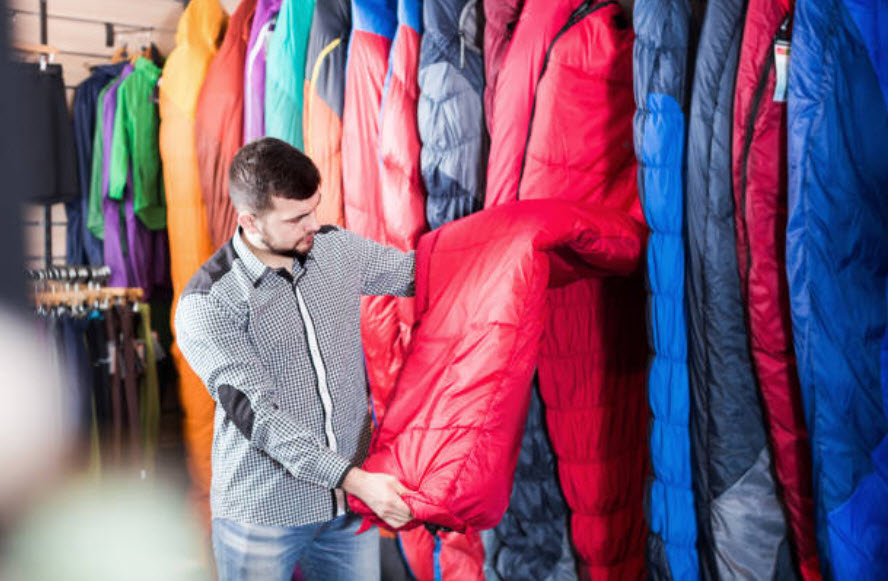My First Sleeping Bag Experience
When I first began camping, it was in our backyard during the summer in a small pup tent. I had my own miniature sleeping bag, perfect for a child to feel snug and secure. It also didn’t hurt knowing that my parents were close by as well as my bed, just in case.
Of course, I had a quilt underneath me, and my sleeping bag firmly tucked around me. With another blanket on top, I felt snug, happy, and content. Good thing my brother was a Boy Scout, he made sure I had my flashlight and let Sherlock, our dog, sleep with me while he slept on the chaise lounge. Covered with a wool blanket, he kept watch throughout the night on our back patio.
Convenience Doesn’t Equal Comfort
As the years progressed, so did my outdoor adventures and of course, my camping needs for convenience and comfort. From my experiences as well as my husbands, we created a list of the best sleeping bags for camping to make it easier for people who need a little help.
My second sleeping bag was lightweight, compact, and fit perfectly securely strapped onto my backpack. This was a backpacking sleeping bag, considered an all-season bag. But, I soon found out that camping when it begins to cool down outside or at higher elevations was difficult as I wasn’t able to fall asleep, I was too cold.
A lightweight bag did not always equal warmth and the only way to really find out what worked was to purchase the bag. You could try it out and buy a different one or return it if possible. I would end up wearing my socks, beanie cap, and my thermals even though sleeping without all of that, is supposed to keep you warmer.
That just wasn’t the case for me. At that time, there weren’t any battery-operated warming socks and gloves, and I was too tired to take a hot rock into the tent to put into my bag. It was a bit much for me to deal with, especially after getting the boys settled down. But I did end up with several sleeping bags that worked well for my sons and for those sultry California nights at the beach.
Sleeping Single or Double
Trial by error when it comes to your outdoor equipment can certainly backfire if you’re not prepared for unexpected temperature changes and inclement weather. My husband and I were camping once in Tuolumne when I was awakened by the feeling of uncomfortable warmth and the inability to really catch my breath. I crawled out from our makeshift bed and unzipped the tent window to find that an out of season snowfall was slowly burying us.
The 2-person tent was hastily tossed into the back of our truck bed with our sleeping bags, blankets, and pillows in it, and we quickly packed up our equipment and got out fast! My tent bed had been comfortable until the unexpected snowfall insulated us that July evening. I was cozy, resting peacefully and contentedly, with a thin pad beneath me, my pillow from home and the smell of the trees around us.
We had two bags, his and mine. His bag was thinner, with synthetic insulation it took a while to warm up when used on its own. Once opened up, it was alright because I had my husband close by and we were in a small tent. It would roll up tight and only took up a small amount of space.
We would unzip our bags and lay one out beneath us and then, use the other bag as our comforter. This was alright for the first few trips until he would roll over taking my side of the covering bag with him, leaving me uncovered and wishing I was in my own bed at home or at least tucked into my own sleeping bag.
Every camping trip was like this until we had children to camp with which totally changed the sleeping dynamics. Now we had baby formula, bottles, diapers, and an adult sleeping bag folded in half so the baby wouldn’t slip down inside but instead would be double insulated. I never felt the children’s bags were adequate where we camped.
My Favorite Sleeping Bag
I finally found the sleeping bag that I have been using for years; I can safely say that I love this bag. I tried a mummy bag once and found that it was too snug, not enough room for me to move around in. Apparently, I’m a shifter while sleeping, moving from one side to the other and have to sleep with my left leg straight and my right leg bent with my foot against my left knee.
It works for me; it just doesn’t work for me in a mummy bag. A mummy style bag is reminiscent of an Egyptian sarcophagus hence the name mummy bag. It tapers down at the feet and will keep you snug if you enjoy sleeping with your bag moving with you or on your back. This style is usually more lightweight and water resistant.
The air around your body in a sleeping bag is trapped between you and the bag insulating you in comfort. My dream bag that I still own and use is filled with goose down. What can I say, I’m a seeker of comfort no matter where I spend the night. It’s a heavier bag so it’s not what you would want to go backpacking with. It unzips to cover a full-size bed, working well when the kids wanted to be comforted during a sudden storm or from the unusual sounds of the outdoors. My boys always loved this bag too from infancy to their tween years after which I wouldn’t allow them near it anymore, but it is that comfortable.
When washing, I use a heavy duty commercial washer then line dry. It has a cotton flannel interior with a nylon outer shell and a zipper that allows a two-way zip from both inside and outside. It’s graded to 30 degrees Fahrenheit so it was a perfect birthday gift for me as my feet are always cold.
I have a one-inch yoga mat that I use now underneath my sleeping bag to cushion my shoulders and back. It also helps to keep the damp away that seems to creep into the tent bottom these days.
Real Sleep is Possible Outdoors
Choosing a bag that fits your particular outdoor needs and personal comfort is important. It has to be a weight that is easy for you to pack, easily fitting into your camper, onto your backpack or even effortlessly carried in your boat.
Price can be a deciding factor for many but consider that large retail outlets carry bags that are both affordable while meeting your specific needs. You can learn more about saving money on gear as well as lots of other camping tips over on our blog at tentsntrees.com.
Overall Sleeping Bag Considerations
Keep this checklist handy when you are searching for your sleeping bag:
- What type of camping are you doing? Tent, backpacking, trailer, or cabin, it makes a difference.
- What is your budget?
- What season or time of year are you going to be sleeping outdoors?
- Do you overheat easily or are you always cold?
- Does it need to be water resistant?
- Are you okay with a synthetic bag or do you want more natural products like cotton and down?
- Will your bag travel well?
- Do you have health issues such as diabetes, arthritis, or anemia? All can make you feel the cold quicker and more deeply than others might.
- How do you sleep at home, are you a back sleeper? Do you move around a lot, like to stretch out?
- Does the bag you want fit your height and is it roomy enough?
- Do you want to be able to open the bag and use it as a comforter for family bedtime or are you a lone sleeper?
When choosing a bag for your children always remember, they tend to cool down faster than adults, and the smaller they are, the quicker their heat loss. Children don’t normally sweat as much as adults, so their bags need to be well-insulated, a ground mat should also be used beneath their bag. I kept several fleece blankets handy just in case.
Bag Storage and Upkeep
Once you’ve decided upon your sleeping bag, don’t forget to care for it like you would any item you want to last. The proper storage and cleanliness of your equipment are vital to its longevity.
Storing our bags in their stuff sacks helps to minimize critter access between seasons. We clean them every few trips as they tend to hide the kids’ socks for some reason. Plus after hiking, fishing, sweating, a campfire, and s’mores, the sleeping bag requires some TLC.
Add The Sports Daily to your Google News Feed!







